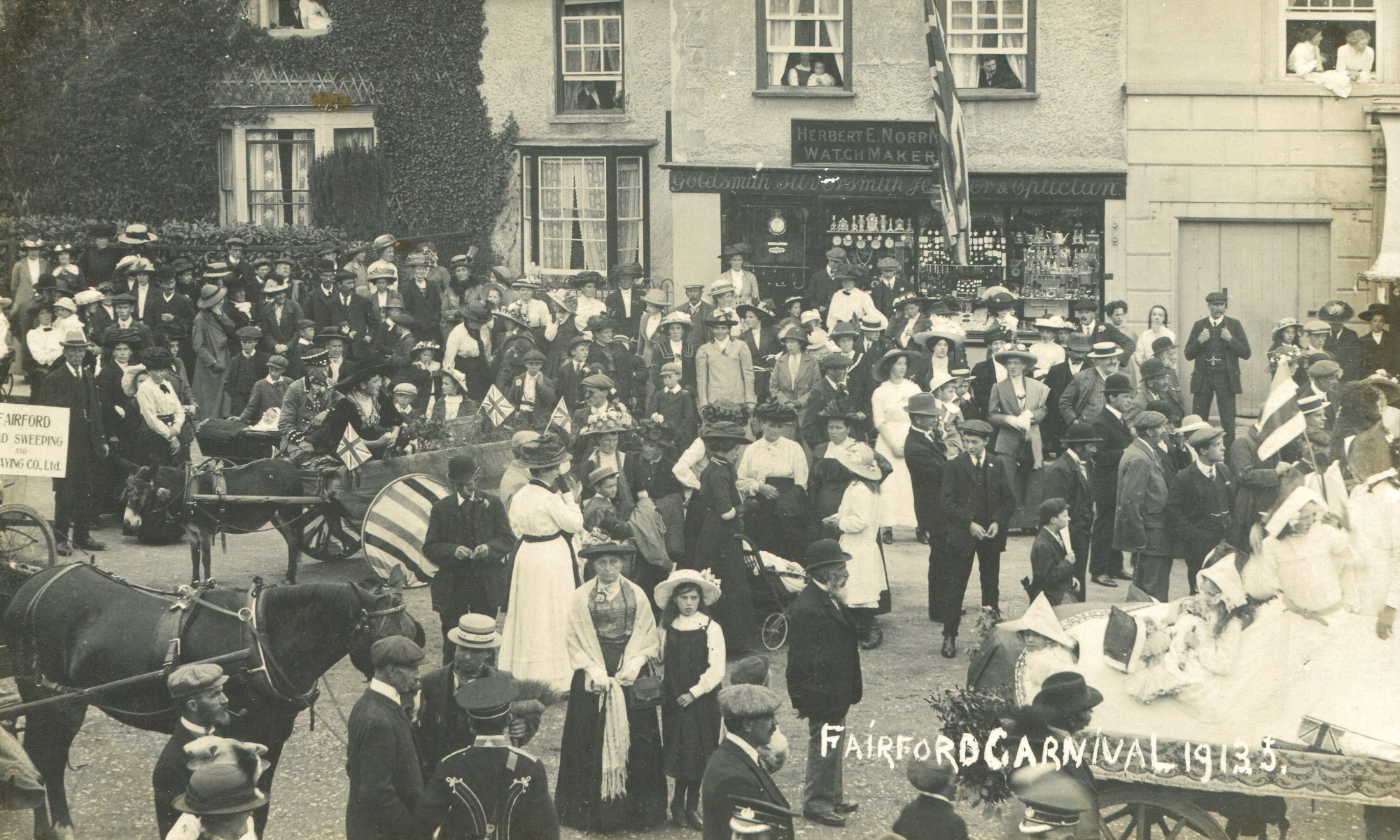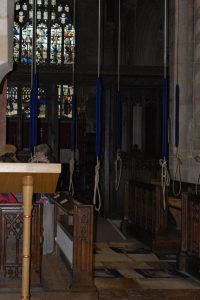The history of bell-ringing with practical illustrations from the bell-ringers
Peter Harris, St Mary’s Tower Captain with some of the St Mary’s team and with the help of ringers from Cirencester enlightened, informed and entertained over 50 FHS members on the technique, science and history of bell ringing.
Since Saxon times bells have been used to summon people to worship, using either hand-bells or fixed bells on a simple spindle. Up until the 14th century the bells were hung on quarter and half wheels but it was after the Reformation when bells were rehung on whole wheels that bell ringing became more popular. In the 17th century bell ringers were of two types, those that were paid and the more wealthy who did it for sport and leisure.
Now the bells could be rung in sequence (a round consists of eight strikes on each bell), one ringer following another. Change ringing which is ringing the bells in a different order began in the late 16th or early 17th century this was subsequently worked out by mathematical compositions, and given names such as Grandsire Triples and Bobs. These sequences have to be memorised, 168 change takes 5-8 minutes.
The treble bell (1) is the lightest and the tenor (8) the lowest note and the heaviest bell. The tenor bell at St Mary’s weighs 17 cwt and at Cirencester Church the tenor bell weighs 27 cwt. The bell is stored in an upright position and controlled by a stay. It rings 360º clock forewards and backwards. The oldest bell in St Mary’s is 1539-40 but the bells were recast in 1927.
It is a peculiarity that change ringing has only developed in Great Britain and other English speaking countries – on the continent carillons are used. There are 50,000 active bell-ringers all over the world.
The members really enjoyed this talk on a subject most of them knew little about. The bell ringers‘ efforts on Sundays will now be much more appreciated. Thanks were expressed to Peter Harris and his team for such an interesting talk and what a lucky coincidence that the talk on bell ringing coincided with the 90th birthday of Her Majesty the Queen and the bells rang with extra joyousness for the special day.




